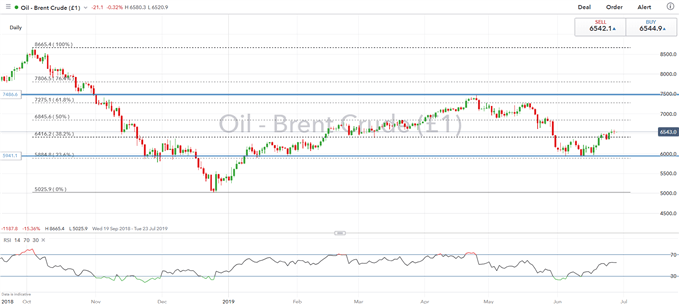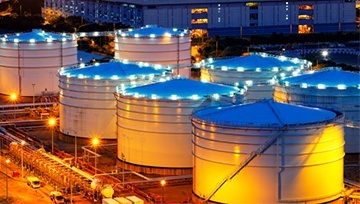Oil Price Analysis and News
- OPEC+/Non-OPEC Production Cuts Likely to be Extended
- Oil Demand Slowing as Trade War Concerns Weigh
- Seasonal Factors Could Support in Q3
OPEC and Non-OPEC ministers will convene from July 1st and 2nd for the 176th OPEC and 6th non-OPEC ministerial meeting. Heading into the meeting, the consensus is for OPEC and Non-OPEC members to agree an extension to the current production cuts.
OPEC+/Non-OPEC Production Cuts Likely to be Extended
On Sunday, the 1.2mbpd production cut agreed by OPEC and Non-OPEC members is set to expire. However, the indications by several oil ministers, most importantly Saudi Arabia, have suggested that production cuts will most likely be rolled over throughout the remainder of 2019.
The reason behind the extension is due to the fragile state of the oil market as concerns over subdued global oil demand are heightened amid the fears of a slowdown in the global economy, partly stemming from the US/China trade war. This has also been highlighted in the latest IEA, EIA and OPEC oil reports, which have trimmed their 2019 demand growth forecast to 1.2mbpd from 1.4mbpd.
Geopolitical Tensions on the Rise
Another sense of how bearish the sentiment is on the oil market has been the limited impact that rising geopolitical tensions between Iran and its rivals, most notably the US, has had on oil prices. While target attacks on several tankers had caused a spike in the oil price, these were quickly pared. However, with the possibility that tensions between the US and Iran could escalate further as Iran look to break its nuclear deal limits, a floor should be placed for the oil complex.
Seasonal Factors Could Support in Q3
Despite concerns of slowing demand for oil, seasonal factors tend to be relatively supportive of oil prices, as eyes turns towards the US driving season. Alongside this, US crude oil inventories also tend to experience increased number of drawdowns. Reminder, most recent data showed the largest drawdown since September 2016. Thus, oil prices could be on a firmer footing throughout Q3, particularly with OPEC+ production cut extensions. However, trade war escalation could keep a lid on gains.
Brent Crude Price: Daily Time Frame (Sep 2018 – Jun 2019)

Oil Impact on FX
Net Oil Importers: These countries tend to be worse off when the price of oil rises. This includes, KRW, ZAR, INR, TRY, EUR, CNY, IDR, JPY
Net Oil Exporters: These counties tend to benefit when the price of oil rises. This includes RUB, CAD, MXN, NOK.
Recommended Reading
What Traders Need to Know When Trading the Oil Market
Important Difference Between WTI and Brent
--- Written by Justin McQueen, Market Analyst
To contact Justin, email him at Justin.mcqueen@ig.com
Follow Justin on Twitter @JMcQueenFX





